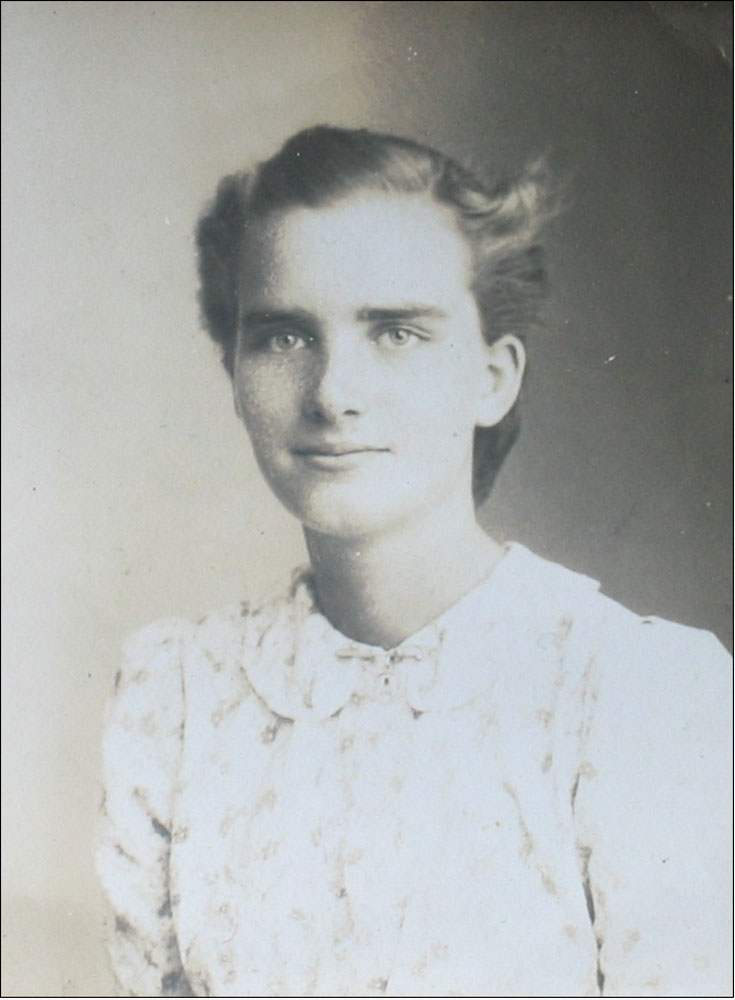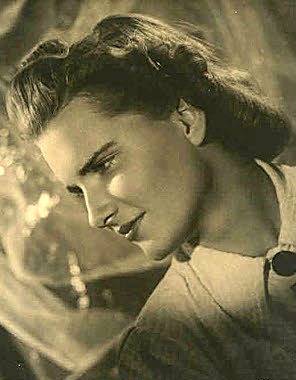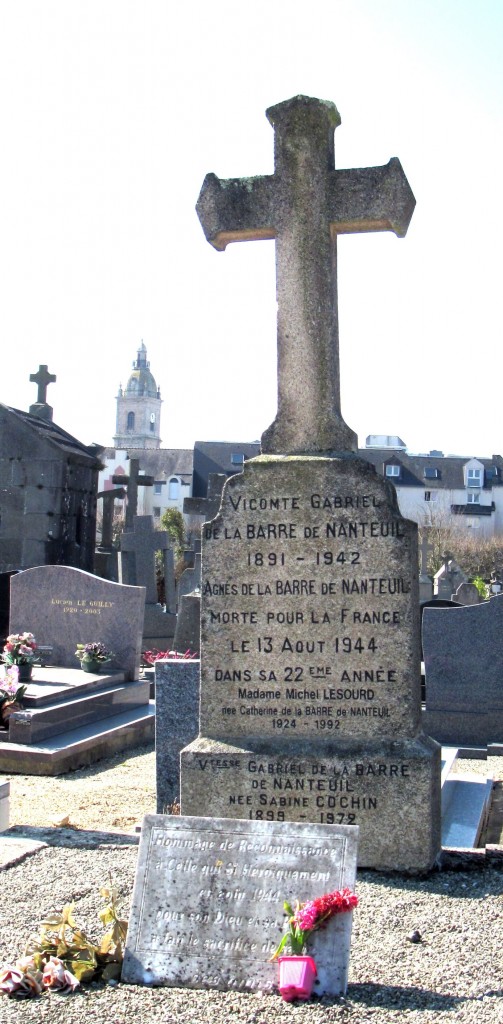
Agnès de La Barre de Nanteuil at 18 years old.
With Joan of Arc, she is the only woman to have given her name to a class of Saint-Cyr-Coëtquidan.
The dolt at the controls (well, that’s what he thinks) has “pantheonized” two certainly remarkable women but forgot one who deserved the honor more than Jean Zay, a deserter in 1940, who was convicted and spent the war in prison, before being killed by the militia in 1944.
I am talking about Agnès de La Barre de Nanteuil, an ardent patriot, exemplary Christian, scout leader and authentic member of the French Resistance who was (among other things) an officer in the second directorate of the Secret Army’s Chiefs of Staff. She was killed in a deportation train in 1944, aged 22.

In 1942, under the name of Claude, she became the liaison officer, Commander Paul Chenailler (1904-1960), better known under the pseudonym Colonel Morice, was in charge of the French resistance in the Morbihan region Brittany during World War II.
I totally agree with the statement by Dominique Jamet in one of his articles: “The share allotted to women under the vaults of the secular temple dedicated to all our [country’s] heroes is unfair to say the least…” We should indeed find very remarkable heroines there. For example, Agnes was an outstanding member of the Resistance, but not being a Communist, no subway station was ever named after her, unlike the unfortunate Guy Môquet, who had the misfortune of being caught while distributing Communist tracts, was imprisoned at Chateaubriand, and became the youngest of forty-eight hostages to be executed by firing squad in October 1941. And yet…
Agnes, who hailed from a family of Normandy’s old nobility, was a monarchist and a very pious person, an English teacher who devoted herself to others. Tall and beautiful, simple and elegant, she had great strength of character, and served as a Scout leader in various youth movements.
After the 1940 disaster, first her father, then her mother, joined the Resistance. The following year, Agnes helped her mother Sabine in the latter’s secret plan to shelter downed British airmen and help them to make their way again to freedom. With their help, some thirty Allied airmen made it safely to Spain. She also helped procure false papers for Frenchmen dodging the STO (Compulsory Labor Force). With her younger sister, Catherine, she became a liaison officer for the North Liberation network and also worked for the second bureau of the Chiefs of Staff of the Secret Army in Brittany, as a second lieutenant. She was 20 years old.

Two B-17s. Agnes helped her mother Sabine shelter downed British airmen and help them to make their way again to freedom. With their help, some thirty Allied airmen made it to safely into Spain.
On March 13, 1944, she marked the ground for an airdrop to supply Resistance fighters, but was arrested on her return home by the SD (a branch of the SS) and handed over to the Gestapo of Rennes. Shortly after, her sister Catherine was arrested.
Though tortured, she disclosed nothing for the first few days, to give her fellow fighters time to go into hiding. Three months later, she was deported in the last convoy departing for Germany. In that 2,000 person convoy, Agnes was wounded during an attack by Allied fighter planes. She died shortly afterwards, at the age of 22, at the train station of Paray-le-Monial, but before expiring, she was able to dictate a last message to her family: “I give my life for my God and my country… I was betrayed, but I’ve forgiven….”
In fact, Agnes was wounded by a German soldier who feared that the prisoners would flee. Severely wounded in the stomach, she was put back into the almost wrecked railroad car and jolted from station to station all the way to Saint-Pierre-des-Corps (Indre-et-Loire) and Paray-le-Monial (Saône-et-Loire), where her wound was finally tended to despite SS opposition. She was then moved on to a stretcher and into a hot and waterless freight car. She survived for three more days, without complaint, succumbing at last to gangrene.
Her companions in misfortune, some of them members of the Young Communists, prayed and kept vigil over her, “a saint with a beautiful face,” as they said, before handing her body over to the civil authorities of Paray-le-Monial. The Red Cross buried her temporarily in this town, in the presence of Scout guides and leaders, who were informed of her death.
In 1947, Charles de Gaulle posthumously awarded her the Medal of the Resistance. In 1951, she was given the Legion of Honor. Her mother and her other siblings were also decorated by France, the United States, and the United Kingdom. In Brittany, several streets bear her name and several Scout units too, but not a single public school, because she was not a Communist or an atheist member of the Resistance. As far as I am concerned, the Church should have beatified her.
That said, in 2002, Agnes was named patroness of the 26th Class of the Military School of Saint-Cyr-Coëtquidan. With Joan of Arc, she is the only woman to have ever been honored in this way by that prestigious Military Academy.

Cadets of the 2004-2007 class of the École Spéciale Militaire de Saint-Cyr, (Military School of Saint-Cyr-Coëtquidan). Photo by Marie-Lan Nguyen
Reprinted with the kind permission of Paul Véglio. Translated by Nobility.org from the French original, which was published on Feb. 23, 2104, at Boulevard Voltaire.
Short Stories on Honor, Chivalry, and the World of Nobility—no. 379













